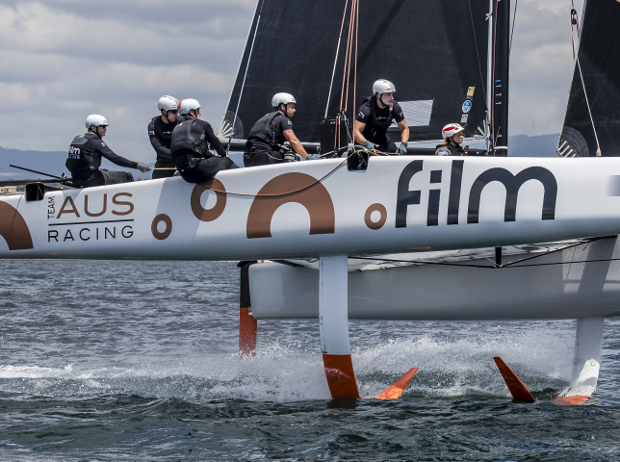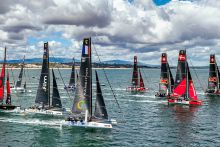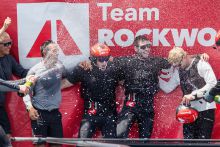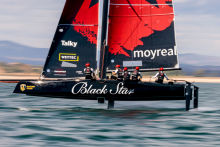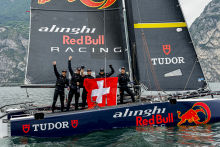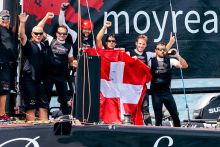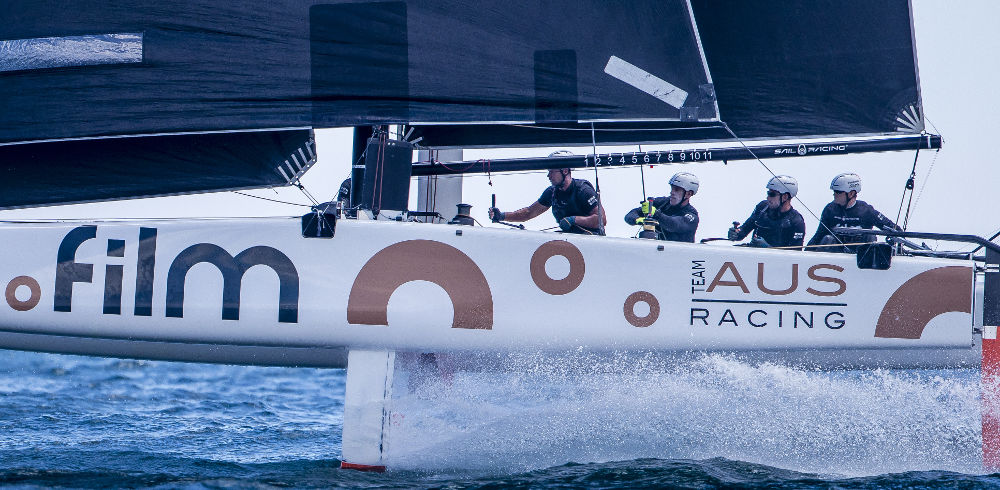
Preparing for take-off
By on 29 Aug. 2018
In French there is the useful word ‘polyvalent’, which roughly translates as ‘all-round’. When it comes to that great sailing nation’s top yachtsmen, few are more ‘polyvalent’ than Sébastien Col.
Having made a name for himself internationally as skipper of Areva Challenge in the 2007 America’s Cup (when he was also runner-up at the Match Racing World Championship), Col today divides his time between the afterguard on the Italian Maxi 72, Cannonball, to calling tactics on a Swiss Melges 32, to working for Vendée Globe winner Francois Gabart’s MACIF team – a significant affair involving two offshore maxi-trimarans, an IMOCA 60, potential Volvo Ocean Race and Vendée Globe entries and two Figaros, and the nearest Col has to 9-5 employment. Another of his other major roles is as tactician for Australian Simon Delzoppo on board .film Racing on the GC32 Racing Tour.
In fact Col is one of the GC32 Racing Tour’s longest serving sailors. He first skippered GC32 founder Laurent Lenne’s SPAX Solution in 2014, when he made headlines setting the first GC32 speed record of 37.9 knots on Lake Garda. He subsequently became tactician on Sébastien Rogues’ Team ENGIE in 2015, before two glamorous seasons with Monaco royal nephew Pierre Casiraghi on Malizia – Yacht Club de Monaco.
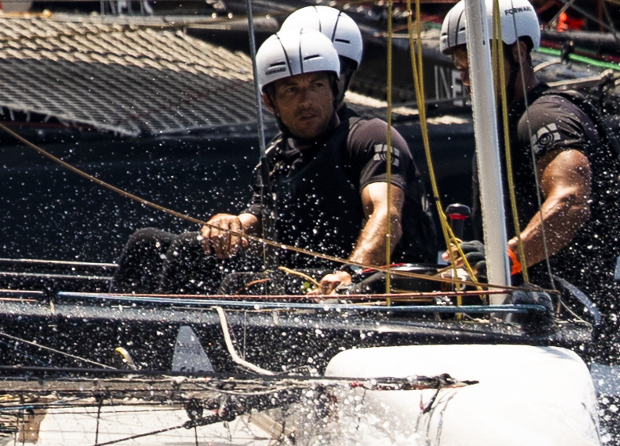
Joining Simon Delzoppo for his second, and first full, season on the GC32 Racing Tour, Col is part of an entirely new .film Racing crew alongside other old GC32 hands – Swedish powerhouse Jakob Gustafsson and British catamaran veteran Adam Piggott (also from Malizia).
Having spent most of his career sailing privately-owned boats, from 100ft maxis down, Col observes the impact the GC32 has made: “Four years ago owner-drivers were only thinking about keel boats. In the future we are going to see more and more foiling boats, but, with the GC32, owners can experience that now.”
In fact the GC32 was conceived primarily for keelboat sailors, or those graduating up from smaller catamarans, wanting to experience America’s Cup-style foiling cat racing, minus the cost and complexity. Thus the GC32 is road trailerable, has a conventional rig and softsails rather than a wing, is large and powerful enough to require a crew of five, but not so big to need hydraulics.
The boat allows owner-drivers to get foiling quickly, explains Col: “There are no other boats which are stable enough and quite so easy to steer. Once you get the fact that you have to sail as flat as possible upwind and downwind, then it is quite easy even for someone who isn’t experienced in multihulls.”
The first hurdle is getting used to the 30+ knot speeds, which for first timers seem stratospheric. “The GC32 will be the fastest boat they will have sailed and that is really impressive at the beginning, but you get used to it very quickly,” advises Col. The same is true of the Formula 1-style reaching starts, with the boats screaming into the first corner.
The biggest psychological barrier for new owner-drivers, maintains Col, is the ‘C word’. The GC32 is a multihull so capsize can happen, but the opportunity for this is much reduced compared to non-foiling catamarans. On those, the dangerous moment is the bear away at the top mark rounding, when they can dig in and trip over their leeward bow. “That is not the case any more on foils,” advises Col. On the rare occasions they do capsize, GC32s typically go over to leeward and, because there is often a ‘will it go/won’t it go???’ few seconds, teetering on the brink as the crew tries to recover it, the capsize happens slowly.
Once over, the infrastructure kicks in – within seconds the team’s mandatory support RIB is on scene as is the GC32 Racing Tour’s dedicated safety RIB with its Safety Officer Henrick Norberg and diver Andi Drack, already in his wet suit. After a head count to ensure everyone is okay, the team’s RIB sets about righting the boat. Experienced support crews can achieve this in minutes. After her capsize on Lake Garda earlier this year, Argo was back racing in less than an hour, also demonstrating that, while breakages do occur, the GC32 is robust enough to withstand a ‘soft’ capsize.
But it is not just the boat that makes the GC32 suitable for owner-drivers, but the GC32 Racing Tour itself, says Col. He believes the most significant moment in the history of the Tour was the decision, made early on, to orient it towards owner-drivers. Since then it has succeeded in attracting privately-backed teams from Europe and across the globe – from the USA, Argentina, Japan, Australia and New Zealand – their owners all eager to experience the latest, fastest cutting edge of yacht racing, made possible by the GC32 and the Tour.
In practice optimising the GC32 Racing Tour for owner-drivers has involved defining the number, duration and format of events, with venues being chosen to provide the best chance of optimum foiling conditions and high quality racing. Col feels the present range of venues is ideal, including the sailing mecca of Lake Garda, the Mediterranean’s leading multi-class regatta, Copa del Rey MAPFRE plus occasional new venues, like Lagos in Portugal or Villasimius in Sardinia.
With all of this comes the recognition, both within crews and the GC32 Racing Tour management, that the Tour represents the owner-drivers’ highly valuable leisure time and must therefore be enjoyable. Aside from the sheer buzz of tearing around in the GC32, this comes with getting more accomplished at sailing it and improved results.
Achieving this, Col says, is no different to any other boats: “It is quite simple – you have to prepare your campaign well in advance, getting the right people in the right positions and them to work together as a team. You need to do things well from the beginning and you need quality training time on the water – ideally three periods of five days – and a good coach.”
Put these pieces in place and the results will come. This has been the case with .film Racing this season, winning or podiuming in more races, although yet to achieve this consistently. “We are getting there,” says Col. “In terms of level, our team is a lot better than at the beginning of the season. Unfortunately in terms of results it is not showing, but it will come.”
Regarding the GC32 itself, the question about whether or not to upgrade the foil package, enabling the boat to foil upwind, comes up every six months, but there seems to be no rush to adopt this. “The package like it is now is okay. The GC32 remains the best boat for joining a foiling circuit,” Col concludes.
